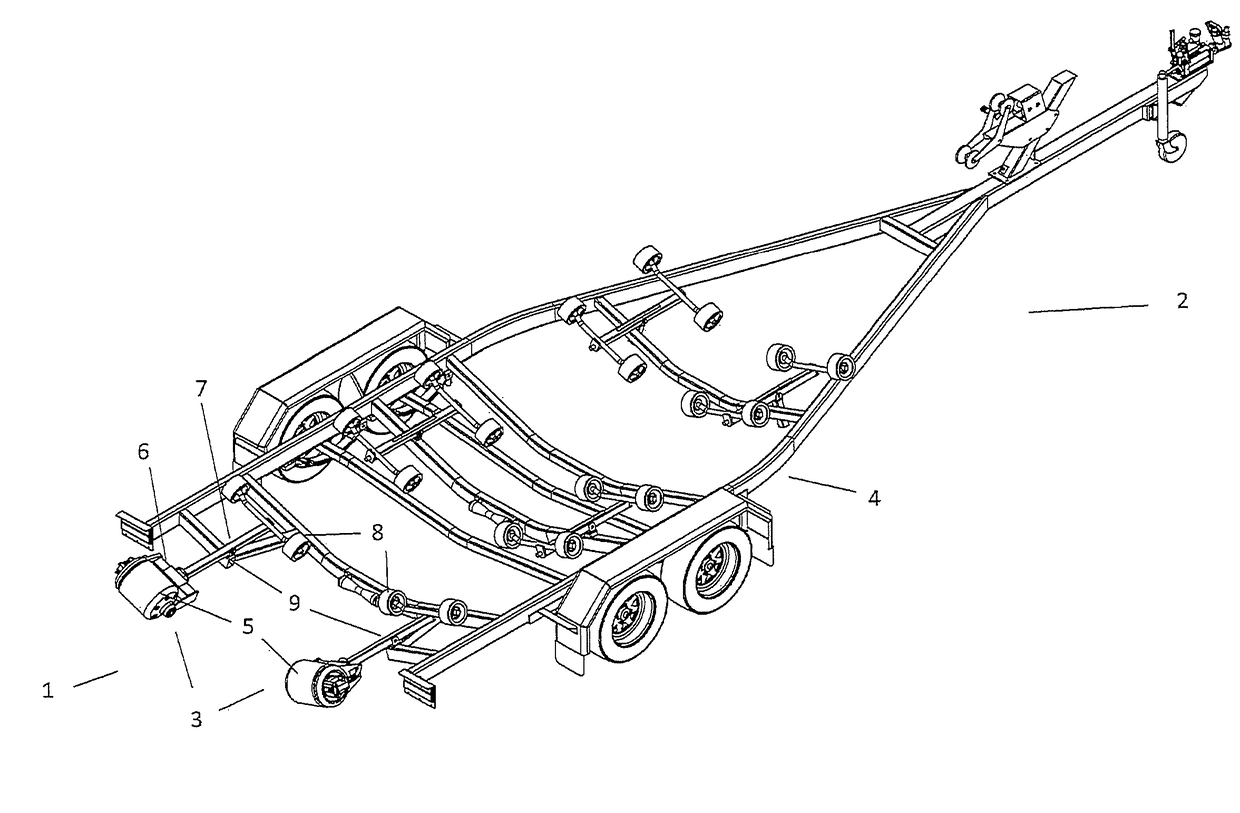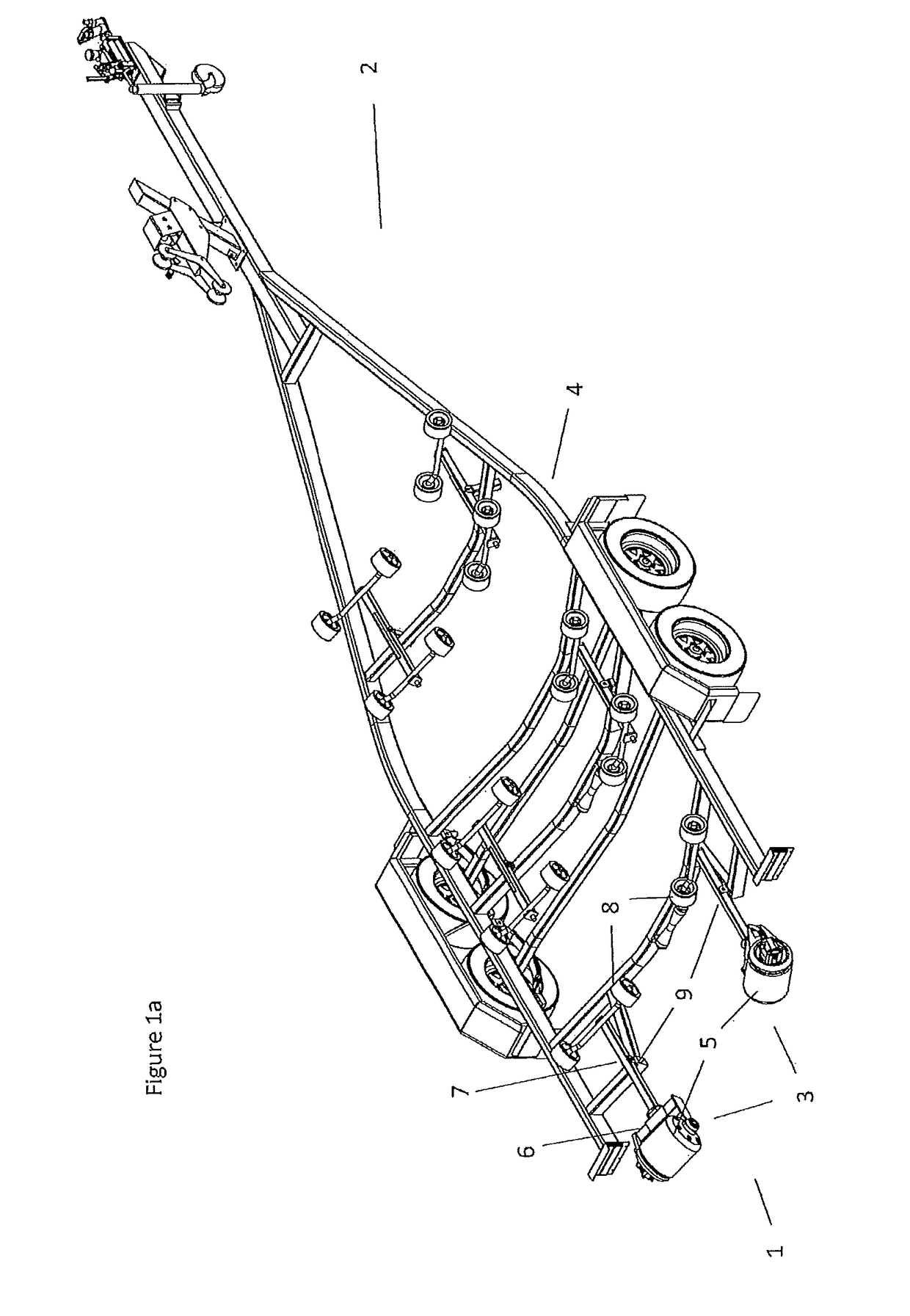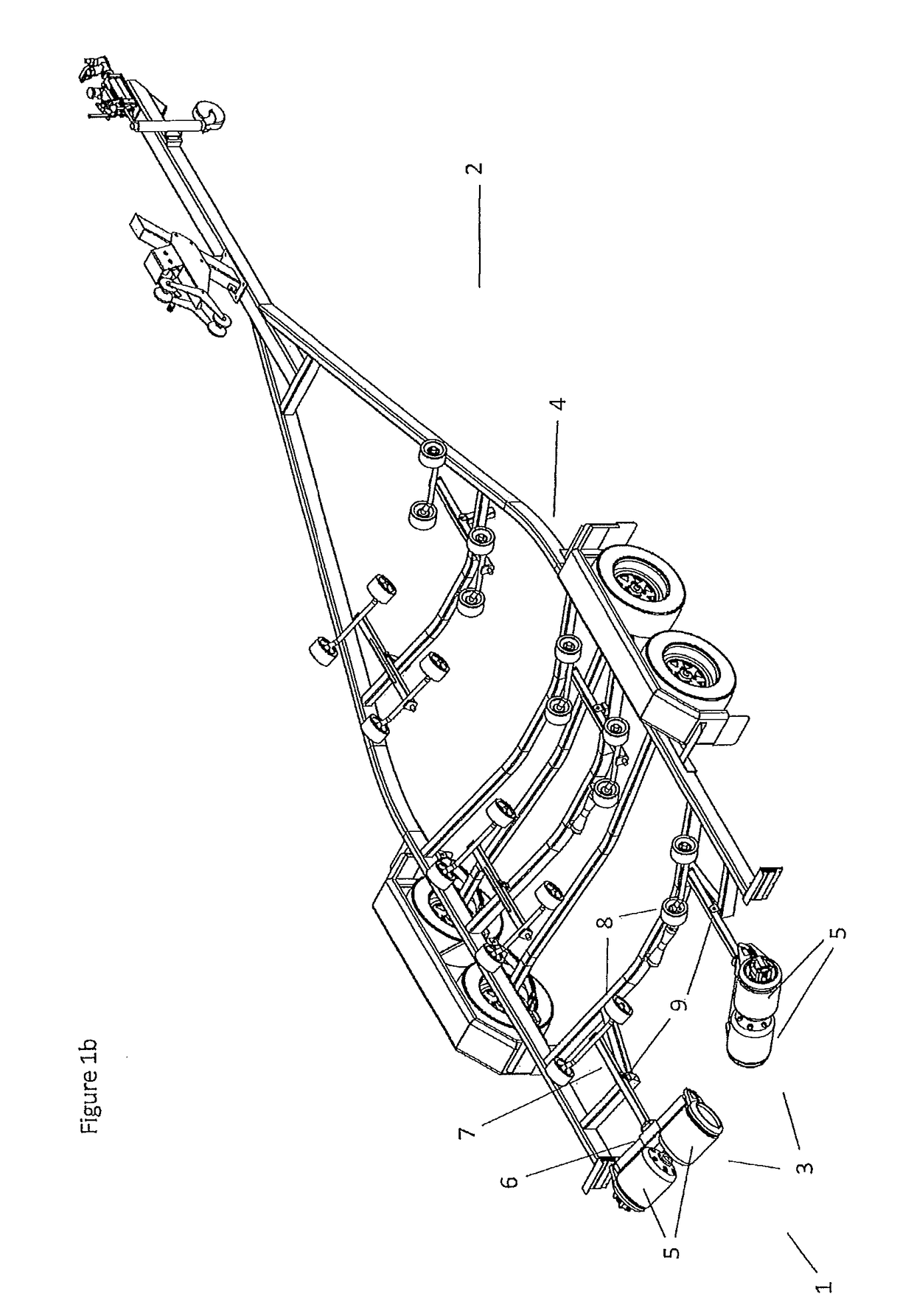Boat support frame loading and unloading apparatus
a technology for supporting frames and boats, which is applied in the direction of waterborne vessels, transportation items, items transportation vehicles, etc., can solve the problems of boat users getting wet, difficulty in employing effective winch based retrieval systems, and slow winch based systems, whether they be manually cranked or driven by electric motors
- Summary
- Abstract
- Description
- Claims
- Application Information
AI Technical Summary
Benefits of technology
Problems solved by technology
Method used
Image
Examples
Embodiment Construction
[0107]FIGS. 1a and 1b shows a perspective view of the invention used in two different embodiments to implement a loading and unloading apparatus 1 for a boat support frame formed from a road going trailer 2.
[0108]In this embodiment the invention is formed by a number of roller assemblies 3 positioned to the rear or loading end of the trailer. The roller assembles 3 are deployed with a symmetrical arrangement centered around the midline of the trailer frame 4.
[0109]In the embodiment shown with respect to FIG. 1a the roller assemblies 3 include a single roller element 5, while in the embodiment of FIG. 1b a pair of adjacent aligned roller elements 5 are provided.
[0110]Each roller assembly is enclosed by the ends of a mounting bracket 6 with each mounting bracket 6 connected to a carrier arm 7 to locate the roller assembly 3 in place on the trailer frame 4. The same carrier arm 7 is also used to deploy a passive roller 8 and provides the invention with a pivoting ‘wobble roller’ arrang...
PUM
 Login to View More
Login to View More Abstract
Description
Claims
Application Information
 Login to View More
Login to View More - R&D
- Intellectual Property
- Life Sciences
- Materials
- Tech Scout
- Unparalleled Data Quality
- Higher Quality Content
- 60% Fewer Hallucinations
Browse by: Latest US Patents, China's latest patents, Technical Efficacy Thesaurus, Application Domain, Technology Topic, Popular Technical Reports.
© 2025 PatSnap. All rights reserved.Legal|Privacy policy|Modern Slavery Act Transparency Statement|Sitemap|About US| Contact US: help@patsnap.com



